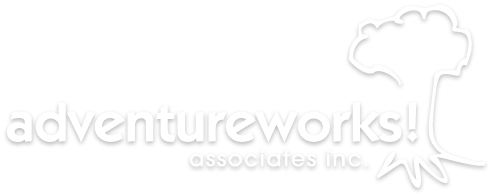Updated COVID-19 Practices for Rope Courses and Climbing Walls
/It seems incredible that the changes in our lives created by the COVID-19 pandemic have been going on for over a year at this point. With the passage of time, information about how the virus is transmitted and the required public health measures has evolved. As a result, Adventureworks! is once again updating its guidance for operating your challenge course program. In this 3rd edition the changes around three main categories: jurisdiction, surface transmission, and physical distancing.
Jurisdiction. Authorities throughout Canada have pursued a regional approach. What someone is permitted to do is highly dependent on where they are located. As a result, this edition puts much more emphasis on compliance with local rules and regulations. This local direction may come from your organization’s Board of Directors, school board, Provincial Camps Association, and, of course, public health department. The information in the Adventureworks Guidance Document is meant to compliment (not replace) your local requirements – which will likely continue to change on a frequent basis.
Surface Transmission. A great deal more is known about how COVID-19 is and is not transmitted than last spring. Whether it’s the US Centers for Disease Control and Prevention (CDC) stating that transmission through surfaces is “not thought to be a common way that COVID-19 spreads” or Toronto Public Health indicating that outdoor equipment (playgrounds) does not need to be sanitized, surface transmission is no longer considered a significant risk. As a result, this edition of the Adventureworks Guidance Document focuses less on cleaning and more on physical distancing. The link https://www.nature.com/articles/d41586-021-00251-4 to an article in the highly respected peer-reviewed journal Nature provides a comprehensive explanation and includes links to multiple published research studies. But, as mentioned in the previous paragraph, if your local authority requires you to frequently clean and disinfect shared objects or not use them at all, then you should follow their directions.
Physical distancing. Whether they are called households, cohorts, social bubbles, circles, safe squads, work pods, or something else, every jurisdiction has established different rules for consistent and long-lasting small groupings of people who are not required to physically distance from one another. The Adventureworks Guidance Document calls these types of groups cohorts. The existence of cohorts (when permitted by jurisdiction) expands the opportunities adventure program providers are able to offer their participants. For example, at family camp a parent would be able to physically assist their child with harnessing and transferring their lanyards from one element to another. The key to someone providing the physical assistance that may be required for low ropes (spotted activities), harnessing, lanyard transfer is that the person performing this role is a trained, competent, and responsible adult. Think of this individual as being the equivalent of a belayer who does not require a back-up belayer. Are their skills at that level? Do they understand their obligations?
Thus, a cabin counsellor who has been taught to spot is eligible to spot the campers in their cabin (assuming the counsellor and the campers constitute a cohort). Campers, on the other hand, should not be taught to spot one another since camper spotting requires instructor back-up – a physical task an instructor from outside the cabin group could not perform while maintaining physical distancing. (Remember, the issue with spotting is the required physical proximity to others – not whether there is any physical contact).
Live Presentations on this topic. We continue to provide sessions at camping association conferences. Join us on 16 April at 3:30 pm EDT for our next LEAP Series Virtual Workshop: Running Your Challenge Course in the Age of COVID.

